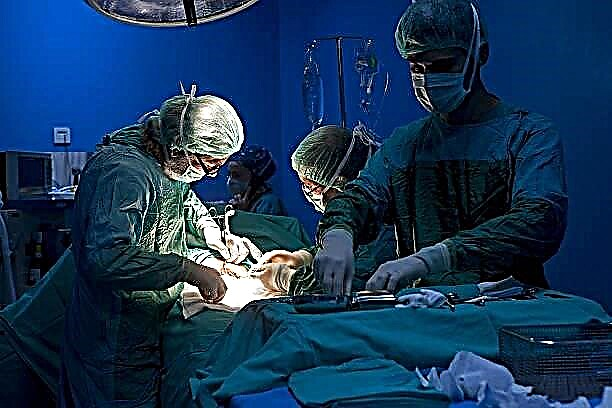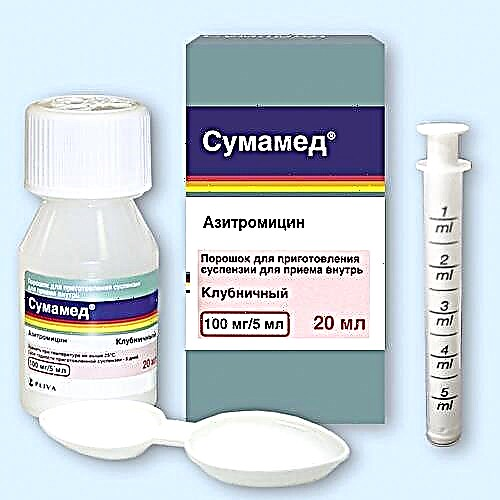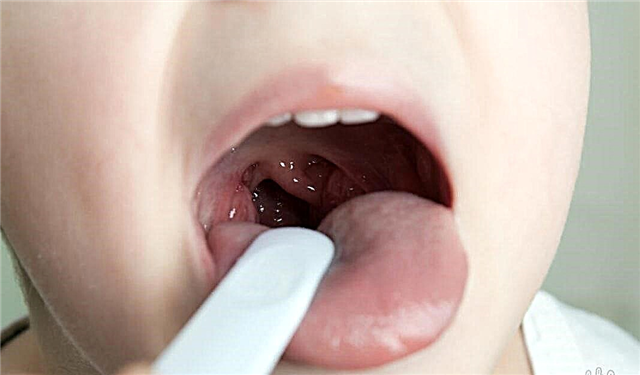Every mother wants her child to grow up strong and strong, not catch a cold from the slightest draft and feel great. Still, many parents are not happy with the health of their baby. The baby is often sick, although he is dressed in an ultra-modern warm overalls, and the heater is constantly working in the apartment and a warm floor is laid.
It is in this situation that parents remember hardening and start pouring cold water on the baby. But the method does not bring the expected effect and disappoints desperate moms and dads. Doctors say that hardening the child's body is an integral part of the child's health, but it must be done correctly.
There are many myths about the methods and ways of hardening children. Parents should understand the peculiarities of the child's body and choose procedures suitable for the baby. Do not forget about the rules of hardening, without which all efforts will be in vain, and the health of the crumbs may even worsen.
What is hardening
Hardening - increasing the body's resistance to unfavorable environmental conditions by targeted, dosed exposure to these conditions.
At the mention of the word "hardening", dousing with cold water immediately pops up in the memory, but water procedures are not the only method of strengthening the child's immunity.
Where to start hardening a child
You need to start hardening by changing the lifestyle of the whole family. After all, the strengthening of the protective functions of the immune system will not occur when doused with cold water. To effectively strengthen the health of the child, hardening procedures should include other simple activities.

To do this, it is enough to bring the baby's lifestyle closer to natural, natural.
- Regular walks
The child should be outdoors every day, actively play in the fresh air. This significantly strengthens the baby's immunity. When choosing between walking and watching TV, parents should give preference to spending time together on the street.
- Do not wrap up!
Notice how many layers of clothing your child is wearing. Dr. Komarovsky claims that at temperatures above 23 degrees, one thin layer of clothing, dress or sleeveless T-shirt is enough.
The child is constantly in motion and he freezes much less often than his parents. Dressed warmly, in several layers, babies sweat quickly, which causes the development of diseases.
Doctors recommend gradually accustoming the baby to light clothes and allowing them to run barefoot around the house. This stimulates the reflex zones on the foot and perfectly strengthens the child's immunity.
- Weather in the house
One of the reasons for frequent colds is considered to be too dry indoor air. Overdried mucous membranes lose their protective properties and cease to resist viruses and bacteria. This is especially true for rooms with additional heaters and underfloor heating.
In houses where underfloor heating is constantly working, air humidity is reduced to 20%, while normal values are 40-60%.
If the air in the apartment is too dry, it is worth considering additional humidification methods.
The temperature in the room should be 20-22 degrees. Observance of sufficient humidity and temperature conditions in the house will protect the baby from many problems.
- Daily regime
The correct balance of stress, outdoor walks and relaxation forms the basis of the baby's health. It is important to prevent overloading the baby with an excess of sections and increased psycho-emotional stress.

- Proper nutrition
A healthy diet is about getting enough nutrients in your diet to help build your body's defenses against infection. Eating heavy food, overeating and feeding the child through force is undesirable. It is necessary to follow the feeding regime, eat simple and healthy food.
- Hardening procedures
The rational use of hardening procedures has a positive effect on the baby's body, improves blood circulation, metabolism, and the work of the nervous system. The child gradually adapts to the effects of hardening factors, the ability to resist infections increases.
Hardening procedures are divided depending on the environmental factor that affects the body. The most common and effective systems for hardening children are water and air procedures, sun hardening.
Hardening rules

- Tempering is fun
Under no circumstances should hardening be unpleasant for the baby. A child should not cry, scream, take hardening as a test. If the child does not like the method you have chosen, choose another option that will bring benefits and positive emotions to the child.
- We are hardening gradually
There is no need to rush to temper the baby, let the crumbs' body adapt gradually. Increase the procedure time little by little, gradually lower the temperature.
- We carry out procedures systematically
Hardening procedures will have excellent results if done regularly. It is best to find the right moment when the baby is full and in a good mood. The procedures should be carried out at the same time every day.
- We combine hardening factors
It is necessary to periodically change and combine hardening factors. The most useful and affordable of them are sun, air and water. A combination of hardening procedures and gymnastics is very effective.
- We prevent hypothermia and overheating of the child
Monitor the condition and mood of the baby during hardening. Too intense activities can negatively affect the health of the child.

- Do not temper during illness
Before starting hardening, you should consult a doctor. If a hardened child is feeling unwell, has a fever, or has been vaccinated, hardening should be skipped.
- Harden together
If the whole family adheres to the traditions of a healthy lifestyle and hardening, the child quickly adapts and supports the parents.
- Start at any age
Although the effectiveness of hardening is higher with the correct organization of the baby's life from the cradle, you can start hardening at any age.
Types of hardening procedures
Air hardening
Air hardening is one of the easiest and safest methods of strengthening the health of the baby. It is with him that you should start hardening newborns and babies up to a year.
Airing
From the first days of a baby's life, you need to create the right environmental conditions. For newborns, a comfortable room temperature is 22 degrees. It is necessary to ventilate the room in winter at least 4-5 times a day, and the air temperature after ventilation should decrease by 1 degree.

During the procedure, a newborn baby should be taken to another room. Older children can gradually be taught to open a window for a short time. In the warm season, the oxygen supply should be constant, you can leave the window open even in the presence of a baby. But if the ventilation of the apartment is through, the child should be taken to another room.
Walking
The first walks with the child can be made within a few days after discharge from the hospital, provided the baby is in a satisfactory condition. The duration of the walk depends on the season and the temperature conditions in the region. On average, the first time you go outside should last about 20 minutes, and the duration of the walk should gradually increase to 1-2 hours.
It is worth giving up walking with a baby if the temperature outside the window dropped below 15 degrees or rose above 30 degrees. This will prevent possible hypothermia and overheating of the child.
To determine the minimum temperature for walking a baby, Dr. Komarovsky suggests a rule: for every month of the baby we add -5 degrees, but in the end the temperature outside should not be lower than 15 degrees.
Air baths
The easiest way to harden babies in the first month of life is to air baths during swaddling. It doesn't take long, the baby is left undressed on the changing table for a few minutes.
When the baby is six months old, the duration of the procedure increases to 15 minutes, and by the age of one year - up to 30 minutes. Good results are obtained by air baths outdoors in summer. To do this, you need to place the stroller with the baby in the shade of trees.
If the child has not hardened before, air baths should be started gradually. To begin with, it is enough to bare the arms and legs, then to the waist, and then leave the child completely undressed. The duration of the first air baths should not exceed 5 minutes. This is how the child learns to adapt to changing environmental conditions.
Tempering children with water
There are various ways of hardening children with water, you can choose suitable procedures for any age.
Hardening in the bathroom

Even healthy newborns, after consulting a pediatrician, can be hardened with water. To do this, the usual bath with a temperature of 37 degrees should be finished with a cool pouring with pre-prepared water from a jug. It is important that the water from the jug is 1-2 degrees cooler than in the bathroom.
Then the temperature of the water in the jug should be gradually reduced by 1 degree every 3-5 days. But you should not pour cold water on the crumbs below 20-26 degrees.
Watering the baby should be kept in the palm of your hand with your back up, starting from the feet and heels and ending with the back along the spine and the back of the head. After the procedure, dry your child with a towel and warm it up.
You can harden the crumb without getting out of the bath. To do this, transplant the baby to the side and turn on the tap with cold water. When the water temperature in one part of the bath is one degree lower than in the other, move the baby from side to side. Thus, swimming in cool water alternates with dipping in warm water. After the procedure, dry and warm the baby.
Rubdown
 After the child reaches two months of age, the following hardening method can be introduced - wet wiping. Rubbing is carried out after the baby wakes up, given that 60-90 minutes should pass after eating. The room temperature should be kept within 20-22 degrees. In the summertime, rubdown is good to do outside.
After the child reaches two months of age, the following hardening method can be introduced - wet wiping. Rubbing is carried out after the baby wakes up, given that 60-90 minutes should pass after eating. The room temperature should be kept within 20-22 degrees. In the summertime, rubdown is good to do outside.
A hardening procedure is carried out using a terry mitt or towel moistened with cool water of 33-35 degrees. If the child is happy to accept the procedure, you can make the water 1 degree colder.
The procedure itself consists in rubbing the baby's skin with massage movements. It is better to follow this sequence: first, the arms and legs of the crumbs are wiped, then they are taken for the stomach, chest and back of the baby. It is better to finish the procedure by wiping the child's skin with a dry towel.
For one and a half year old children, the ideal temperature for wiping is 28-30 degrees. Over the age of 2 years, it is permissible to cool the water to 24-26 degrees. For a grown up kid over 4 years old, with regular hardening, water cooled to 22-23 degrees is suitable. Hardening of older children, adolescents is carried out with water below 20 degrees.
Dousing
After the child has adapted to wet wiping, you can start hardening by pouring cool water. The procedure is carried out both while bathing in the bathroom and taking hygiene procedures, or separately.
Pouring over baby's arms and legs
If the child has not received hardening procedures before, it is necessary to douse it 2-3 weeks after the baby has adapted to rubdown. First, start pouring 30-32 degrees water over your baby's arms and legs. After the procedure, rub the skin of the crumbs until light redness. The water temperature is reduced by one degree every week until it reaches 20 degrees.
Important. When pouring water, the child should be warmed. If the baby's arms and legs are cooled, hardening with cool water does not make sense, the body does not perceive the change in the environmental factor.
Contrast douche
You can apply a contrasting drenching of the legs and feet of the crumbs. To do this, the child's legs are alternately watered with warm and cold water. Please note that the temperature of warm water should be 30-32 degrees, and the temperature of cold water should fluctuate within 24-25 degrees and gradually decrease.
One of the types of contrast procedures is the use of foot basins with warm and cold water. The immersion of the feet in water is carried out 3-6 times.
Weakened children should end the procedure by dipping their feet in a basin of warm water, and hardened ones in cold water.
Pouring the whole baby

After the baby has adapted to partial dousing, you can start dousing the whole crumbs. For this, a container with water or a shower is used. If the child has been hardening well and for a long time, then a contrast shower can be used.
Do not forget that hardening should take place in a playful way and not cause negative emotions in the baby. In hot summer weather, it is good to carry out any method of dousing outside.
Hardening by the sun
The sun's rays strongly affect the activity of the crumbs' immune system. In small doses, ultraviolet light stimulates the protective properties of the child's body. But increased sun exposure, especially in children under 3 years of age, can be dangerous.
It is unacceptable to stay in the open sun, and even more so the sunbathing of children under 1 year old. The skin of the baby is not able to produce a sufficient amount of protective pigment - melanin.
You can temper babies with the sun only in the shade of trees. In this case, the sun's rays are scattered and do not have a harmful effect on the baby's skin. Make sure that during hardening the child can move, play with toys, and do not forget to put a panama hat on the baby's head.
At an air temperature of 25-26 degrees and there is no wind, you can leave the baby in shorts and a T-shirt made of thin fabric. After half an hour on the street, with good health, the child is exposed for a few minutes. Every day, the time spent without clothes for the crumbs is increased by a minute until it reaches 10 minutes.
Starting from 3 years old, you can gradually take your baby out into the sun. For hardening by sunbathing, the time before noon and after 4 pm is better. It is important that at this time the child plays quiet games and does not overwork. The duration of the first sun hardening procedure should not exceed 5 minutes. The maximum duration of sunbathing for children should not exceed 50 minutes.
Sun hardening is unacceptable if the air temperature has risen above 30 degrees.
Swimming in ponds
A very effective way of hardening is swimming in reservoirs under the open sky. In this case, all hardening factors are combined - the sun, air and water. This hardening method is suitable for children over 3 years old.

To start the procedures, preference should be given to the morning and evening periods. The air temperature should be at least 25 degrees, and the water should be at least 23. Be sure to take care of the presence of a beach umbrella, shade where the baby can rest. You need to start hardening from 15 minutes in water.
Hardening and age of the child
Each mother is interested in the question of what needs to be done so that the baby grows healthy and active, will the early hardening method harm the baby.In fact, many of the fears of parents are unfounded, competent tempering will strengthen the immune system and help avoid frequent illnesses.
For children under one year old, air hardening is ideal, which can be carried out when the child is changing. Then include cool water douches or wet wipes into your daily baths. Do not forget about walks, you should choose the right clothes for your baby.
For children over 3 years old, in addition to the above, you can use contrast procedures and start applying sun hardening. Good results at this age are obtained by a combination and change of hardening methods. Hardening children and adolescents can include a full range of immune-boosting activities.
Conclusion
- Hardening a child's body is a simple and effective way to train a child's defenses.
- It is best to start accustoming a child to hardening from the first year of life. But if you missed this period, do not despair - it is never too late to start hardening. Guided by simple rules, you can easily and safely increase the body's resistance.
- For each period of a child's life, the impact of a certain environmental factor is suitable.
- Strengthening the baby's immunity should include not only the impact of physical factors, but also the correction of the lifestyle of the whole family. This will bring good and long lasting results.



